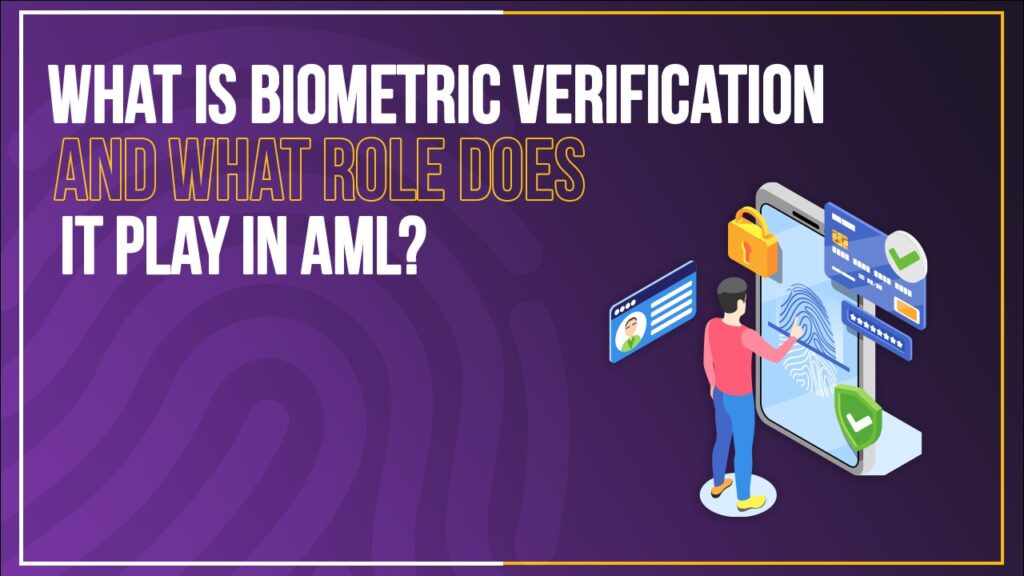The landscape of money laundering risks is ever-evolving, and as these risks increase, the defences against them are also forced to advance. Numerous AML solutions exist, from risk screening to name screening. Yet one identity verification system serves as a robust and effective solution against money laundering risks, and that is biometric verification. This is because biometric verification offers unmatched accuracy and, therefore, security. Discover biometric verification's role in today's complex AML compliance world.
What is Biometric Verification?
Let's first define what biometric verification is. It uses distinctive biological characteristics such as fingerprints, iris scans, or facial recognition to verify a customer's identity.
How it Has Evolved
Previously, biometric verification was used very seldom and only in highly high-profile cases where a high level of security was required. However, today, biometric verification has found itself into mainstream identity security measures. This is because money laundering attacks have become more common and robust. It is essential to have effective AML defences such as biometric verification. Due to this, biometric solutions have also been programmed to become more user-friendly.
What is the Role of Biometric Verification in AML
1. Unmatched accuracy & reliability
As biometric identifiers are unique to every individual, they are of the utmost accuracy & reliability as compared to traditional identification methods.
2. Elevated KYC Processes:
KYC, or Know Your Customer, is the cornerstone of AML compliance. When coupled with biometric verification, there is an extra layer of assurance, ensuring that a person is really who they say they are and not posing as someone for extortion.
3. Fraud Prevention and Detection:
As biometric verification uses such unique features as determinants for verification, it is a very complex system to manipulate; this makes it highly effective as a deterrent against any fraud, protecting your company from malicious customers.
4. Authentication in Real-Time
Biometric authentication is real-time, meaning that it can quickly catch anyone posing as another, thereby protecting your business from any money laundering or other financial crime risks.
5. Compliance with AML Regulations:
To be compliant with the ever-changing and complex regulations for AML compliance, biometric verification is the right technology to offer the utmost protection against money laundering and help you stay compliant and away from any penalties.
6. User-Friendly Experience:
As technological advancements are overwhelmingly increasing as needed, ensuring these technical solutions remain easy to use is essential. Biometric verification technology, while advancing us, is also making sure to keep up its user-friendliness, adding another reason why it is the perfect AML solution.
How Biometric Verification works in the real world for AML:
Let's say a financial institution such as a bank is incorporating biometric verification in its customer onboarding process. Here's how that would work out:
Stage 1: Identity Verification at Onboarding:
Customers would provide their biometric data during onboarding, which would then be securely stored.
Stage 2: Authentication:
Before the customer is fully onboarded and a customer initiates any transaction, they will undergo biometric verification for authentication.
Stage 3: Alerts for Suspicion
Suppose. If the system does not verify the biometric data provided, a risk alert will be triggered, thereby stopping the customer's onboarding process and bringing it to a halt. Upon this, a manual risk check can be conducted for further investigation. If everything matches, then the customer will be onboarded normally.
Overcoming Challenges in Biometric Verification
Biometric verification offers excellent benefits regarding the safety of financial institutions and businesses against money laundering risks. However, sometimes the challenges may persist, so a more comprehensive approach should be taken when considering financial crime risks. Name screening is another effective tactic to ensure smooth customer onboarding. Moreover, when selecting a biometric verification system, one should be careful to opt for one that uses advanced technology and is easily integrated while being compliant.
Choose Idenfo Direct for Biometric Verification
In the diverse landscape of AML solutions, Idenfo Direct stands out as a trusted ally. Idenfo Direct provides cutting-edge biometric verification, ID verification, name screening, and record checks for effective and seamless customer onboarding. Our solution has been designed to provide a comprehensive approach when dealing with AML regulations and customer onboarding. We make sure that businesses not only comply with AML regulations but that they enhance their overall security against financial crimes.
Including biometric verification into AML frameworks signifies a significant shift in the struggle against financial crimes. As the industry advances, biometric verification will be essential in establishing strong AML defences, ensuring a safer, more compliant, and transparent financial ecosystem.









